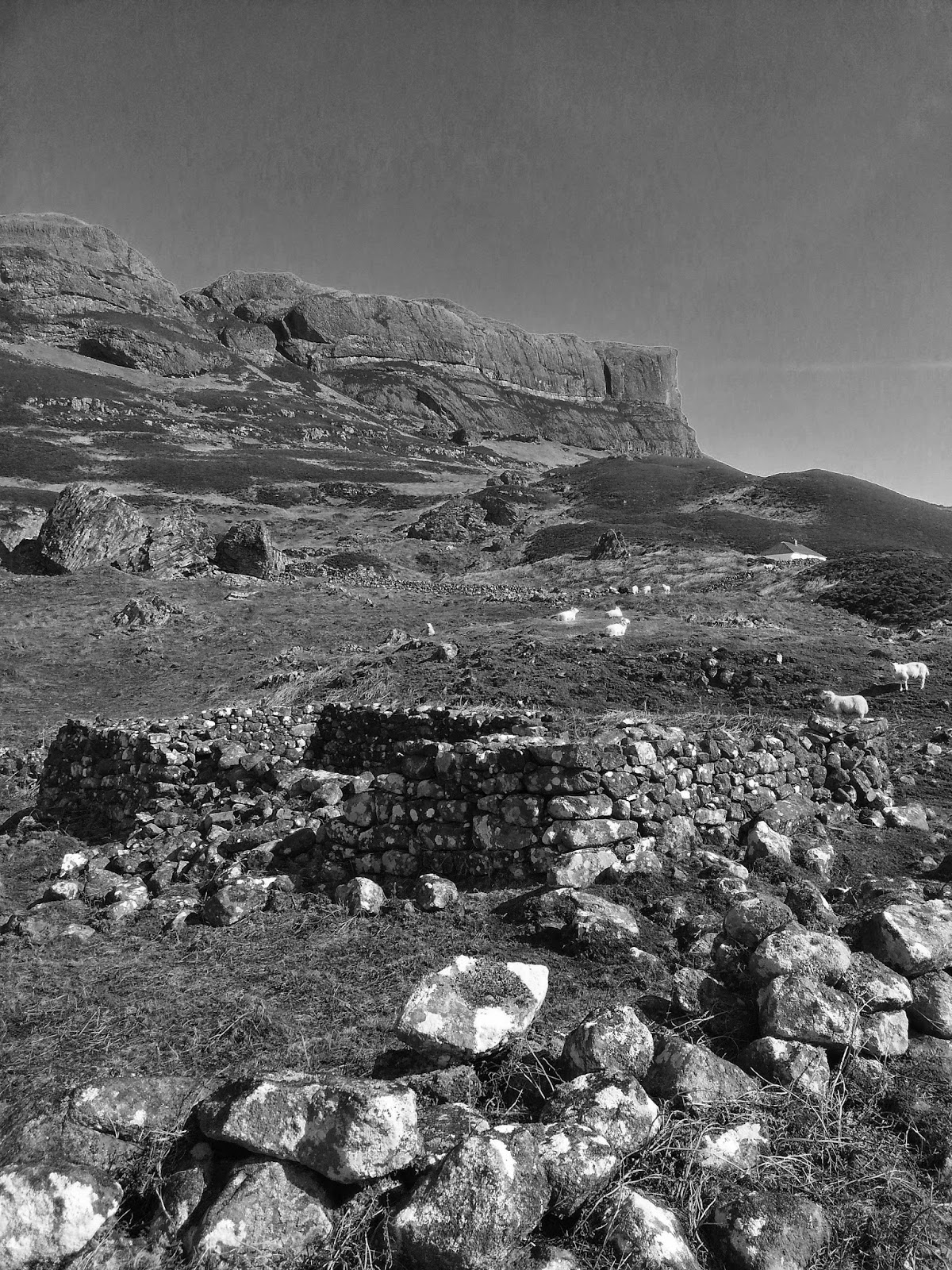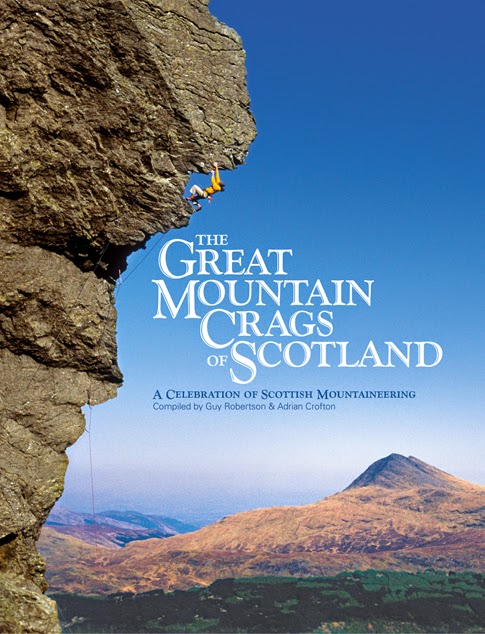Wake Up and Have Your Corncrakes - Mull bouldering
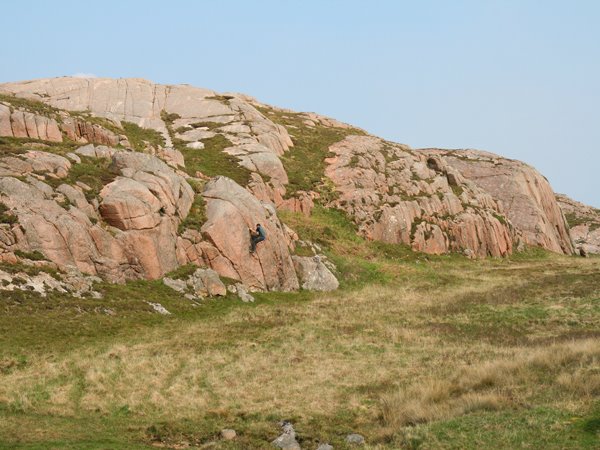
I came to Mull to further scope out the fine bouldering around Fionnphort on the pink granite walls, one of which contributed the template to our own Scottish Climbs website. This is a place for summer bouldering, meandering between perfect walls and slabs, dancing along the beflowered crisp machair, climbing to the endless accompanimant of skylarks and corncrakes (by 5 in the morning these were 'bloody corncrakes').
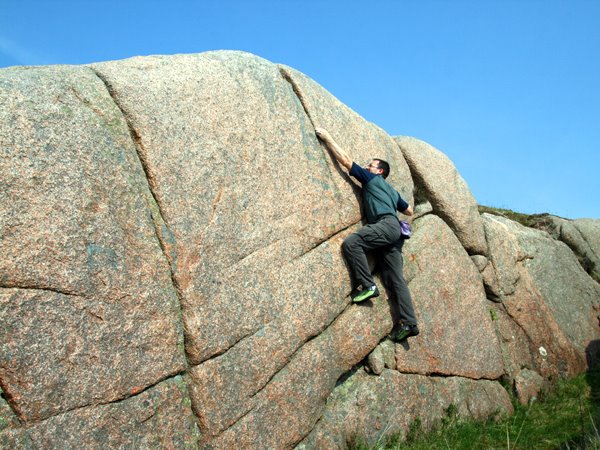
Fionnphort is idyllic for long roaming sesssions of climbing in the easy movement and sudden puzzling positions into which granite slabs lure you... the climbing is either enjoyable or simply impossible due to the blank and rounded nature of the slabby domes. Here and there are some good cracklines and the occasional nodule pokes out to provide a resting foothold or a thankful hand feature. Most of the time the body is poised on fulcrums of balance, hoping the granite crystals won't crumble, or you piano-finger larger crystals to inch over that mantle.
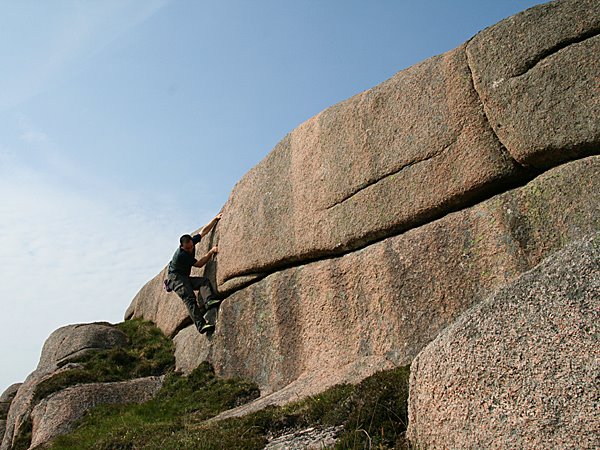
There are hundreds of short solo walls and crags awaiting the bolder boulderer, around Kintra just to the north and at Erraid and Fidden to the south. Listen out for the famous corncrakes - you can't mistake them... they sound like some hopeless car-jacker touching two live wires together - krek krek! krek krek!

I've put a topo of a fun 'yellow' level circuit on my main website on the topo page.

